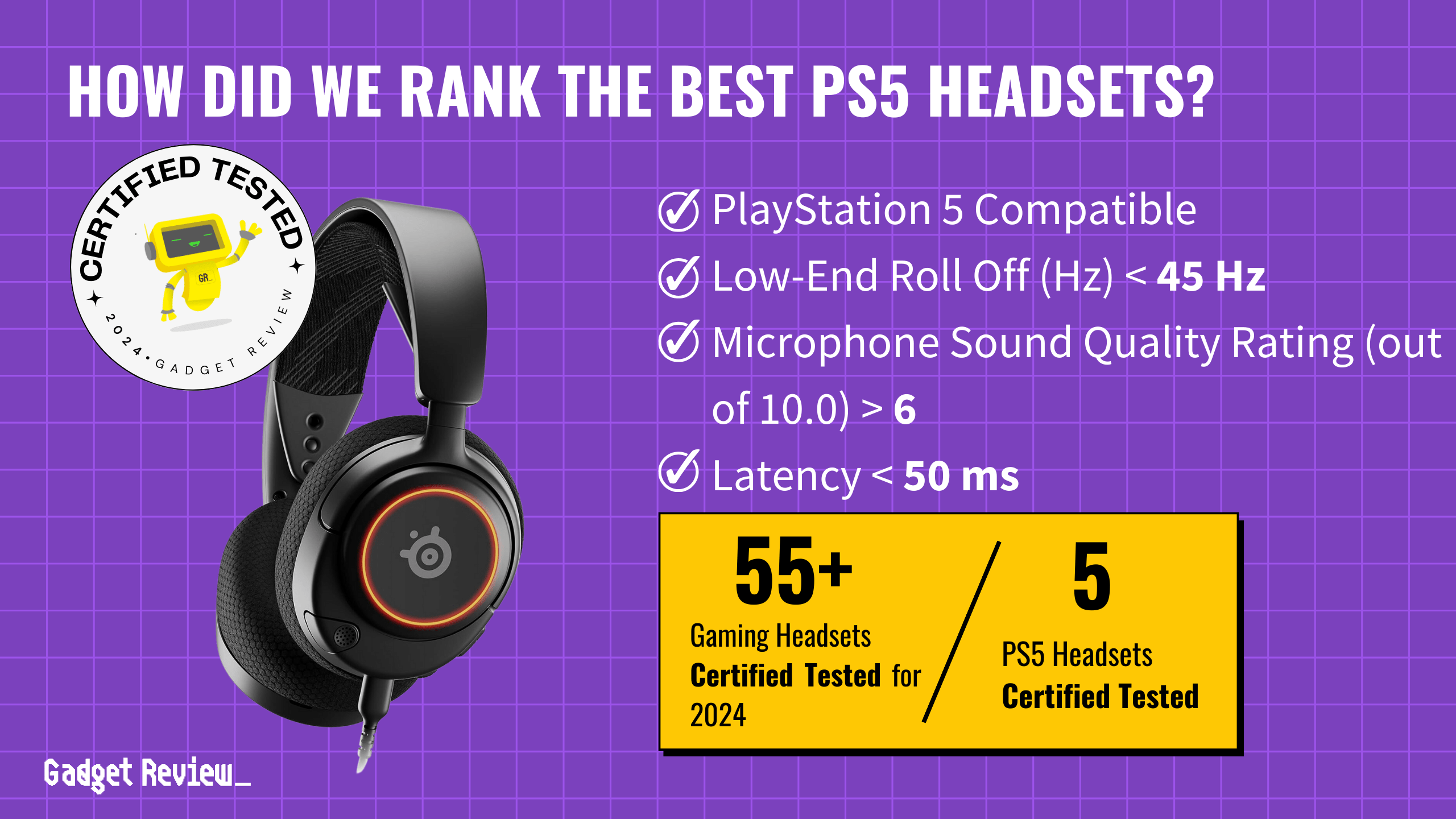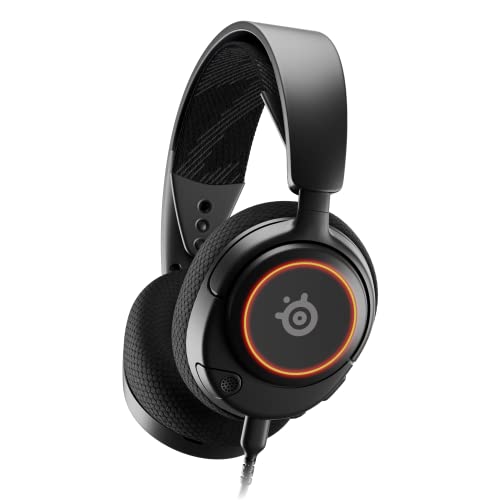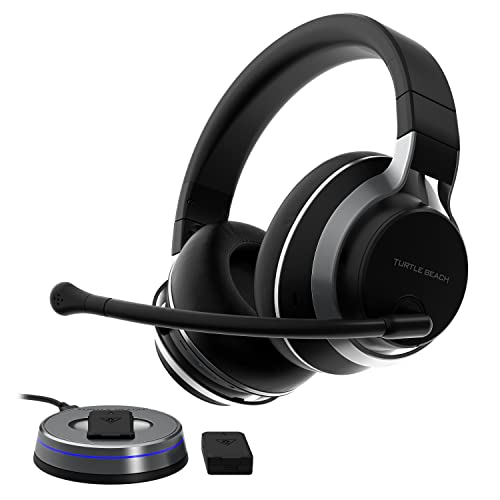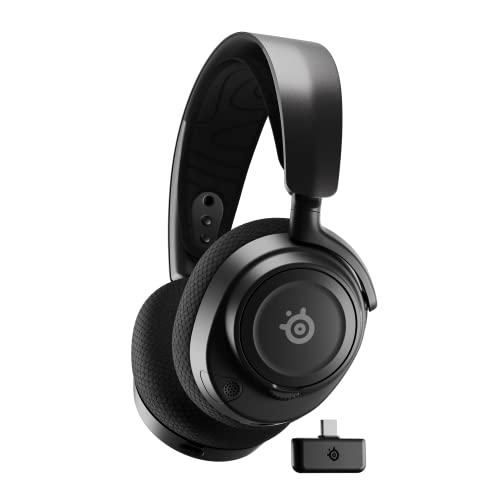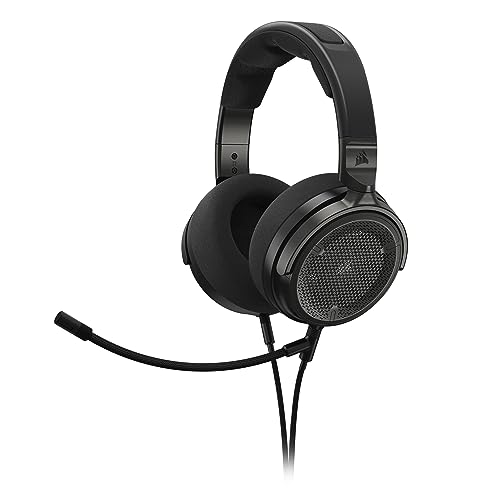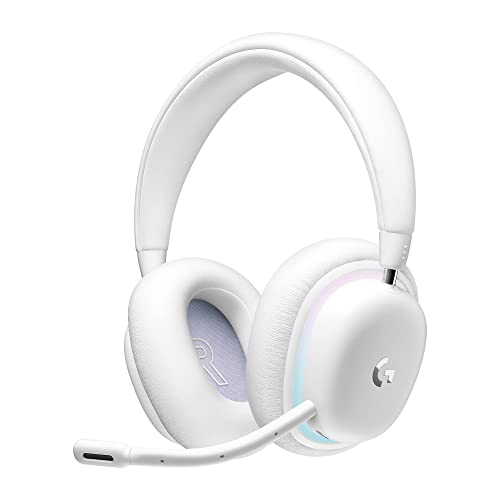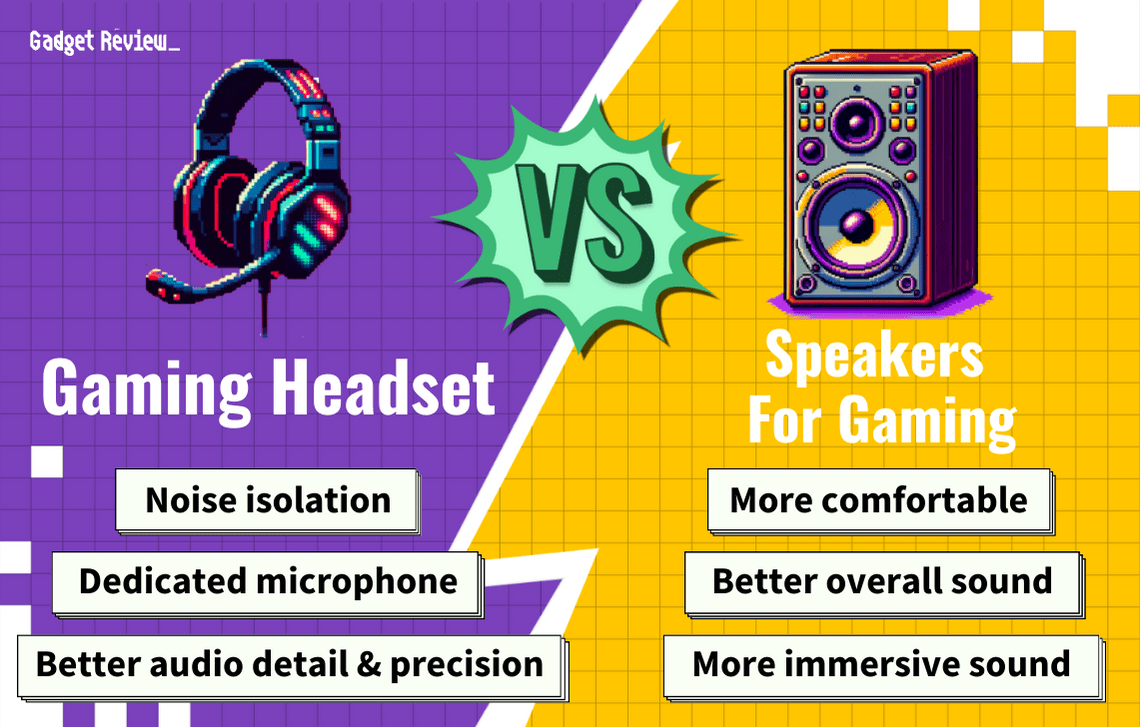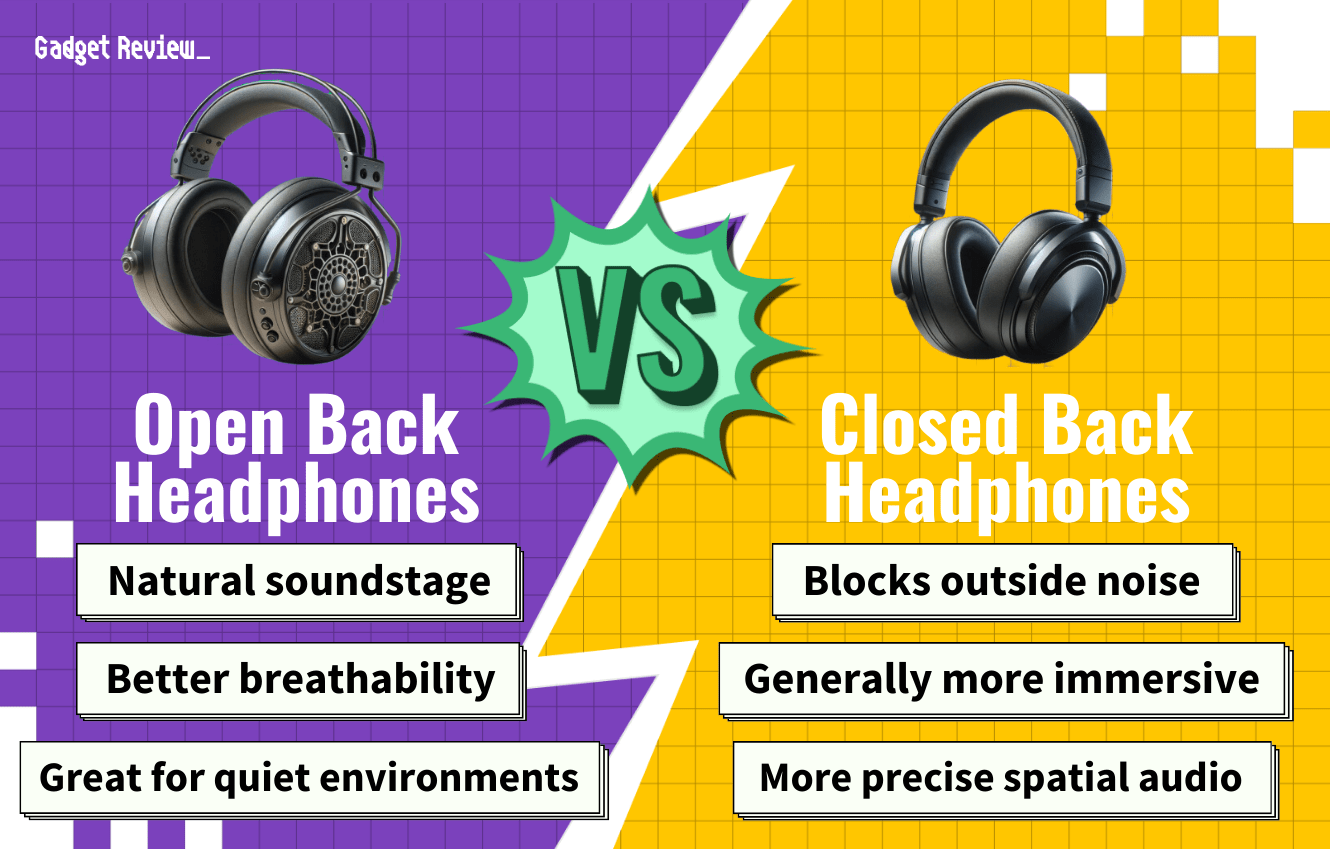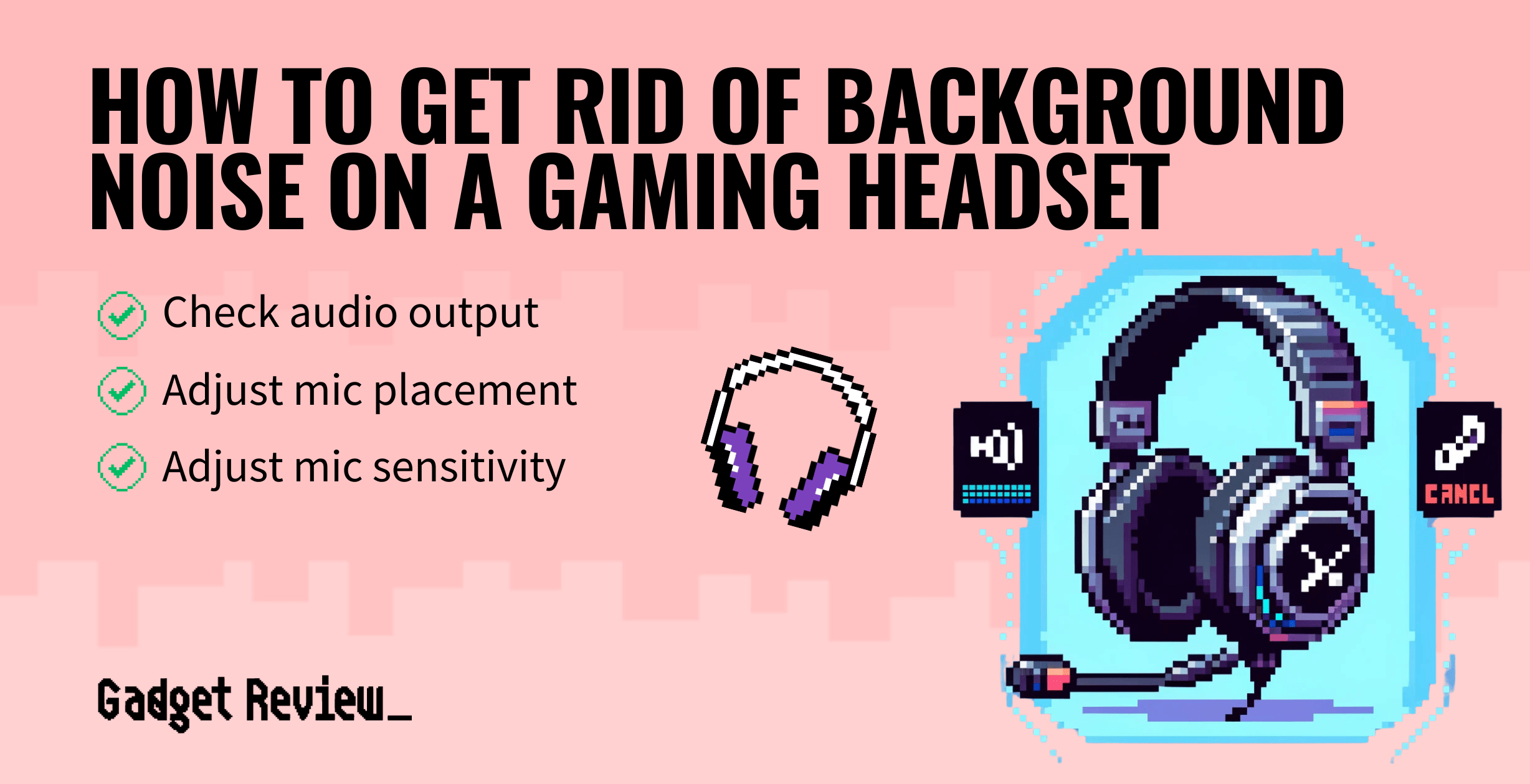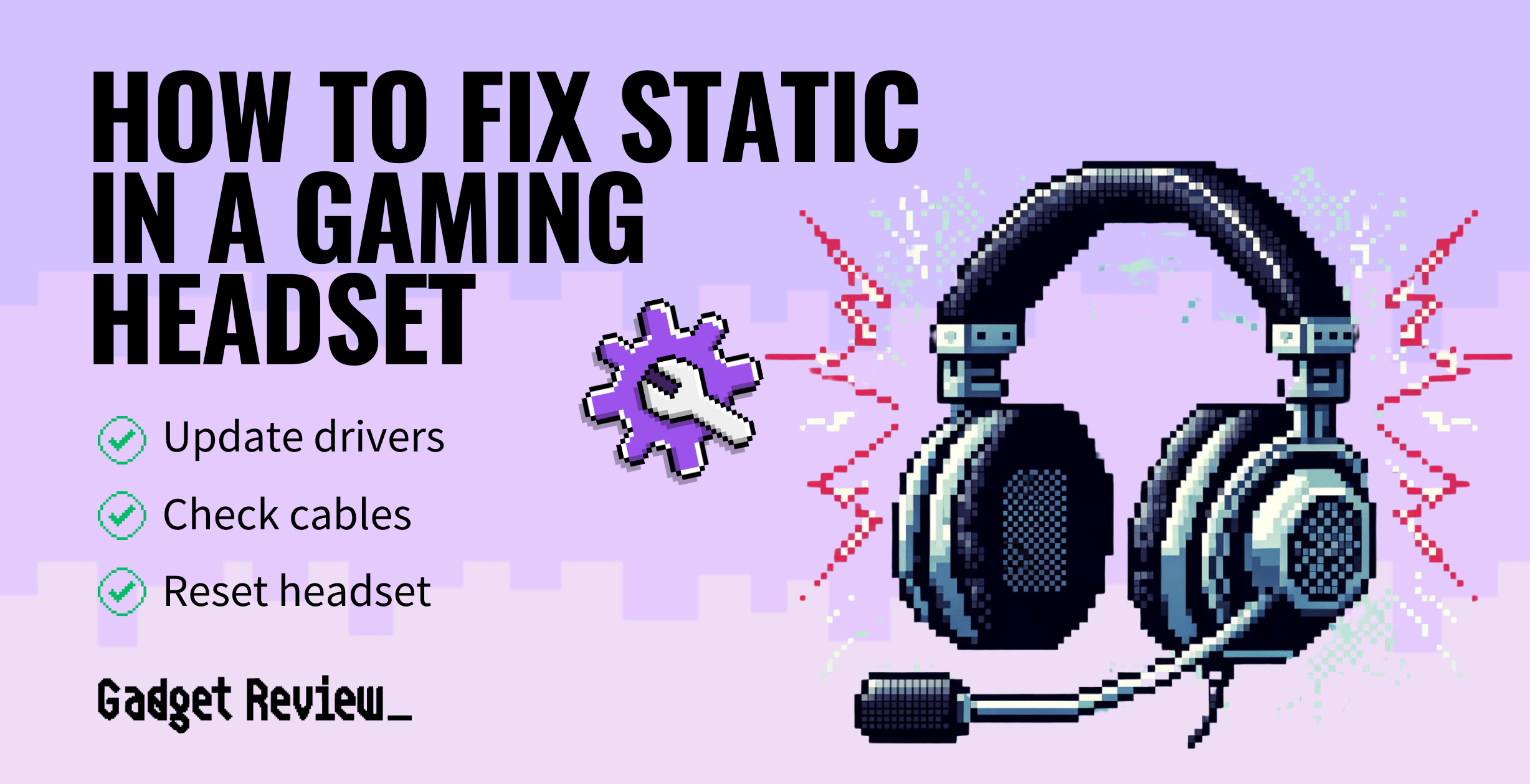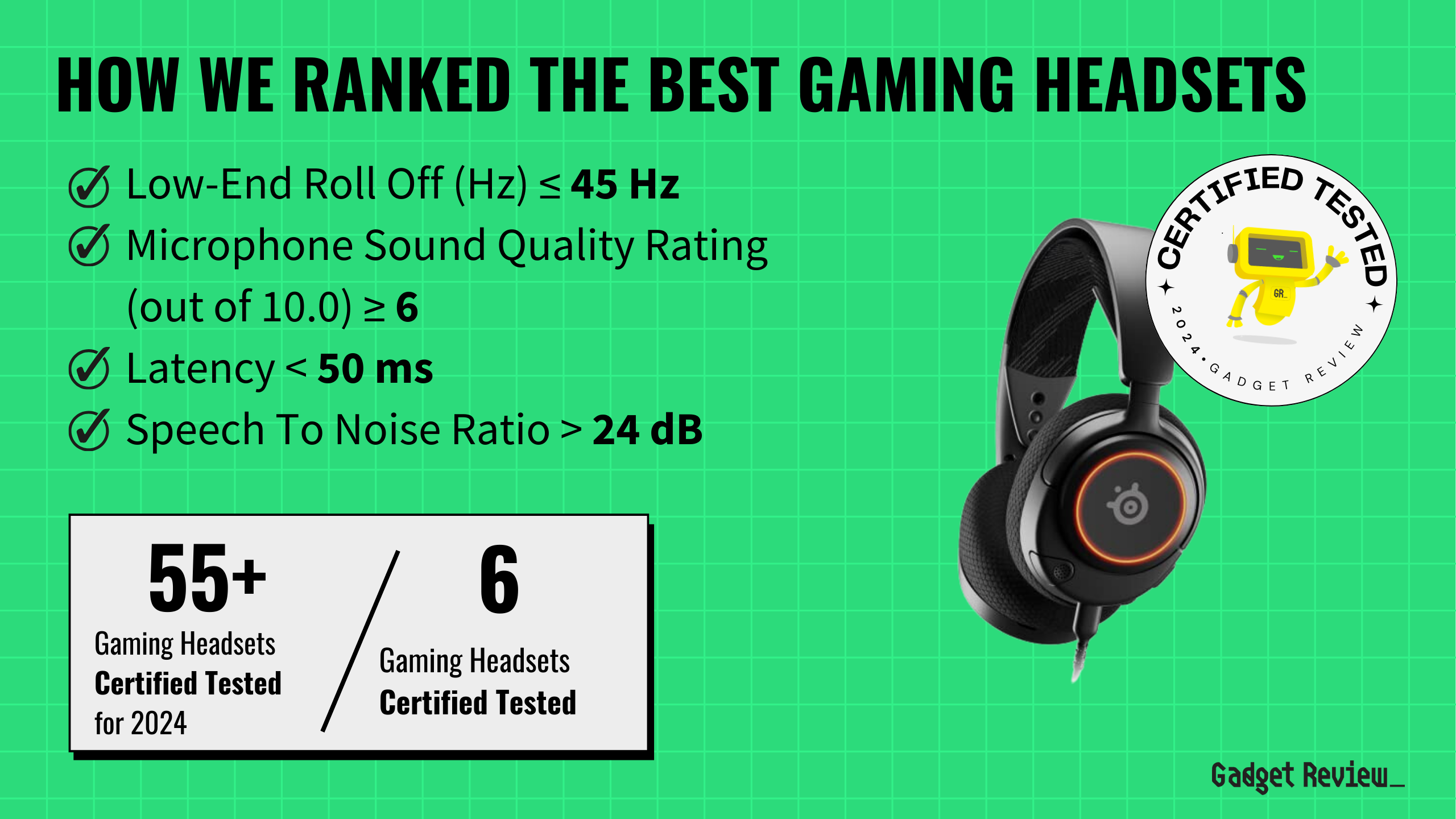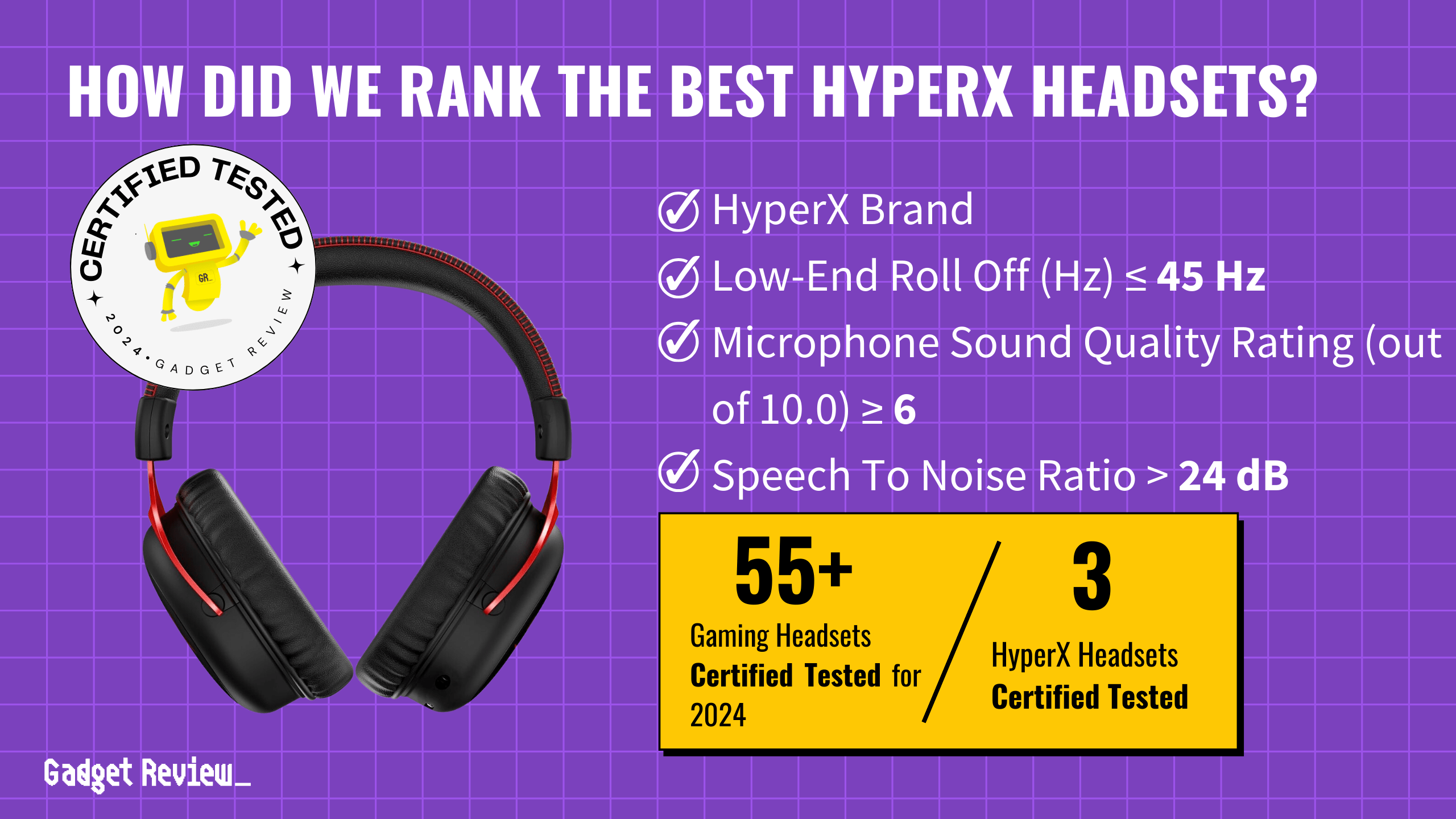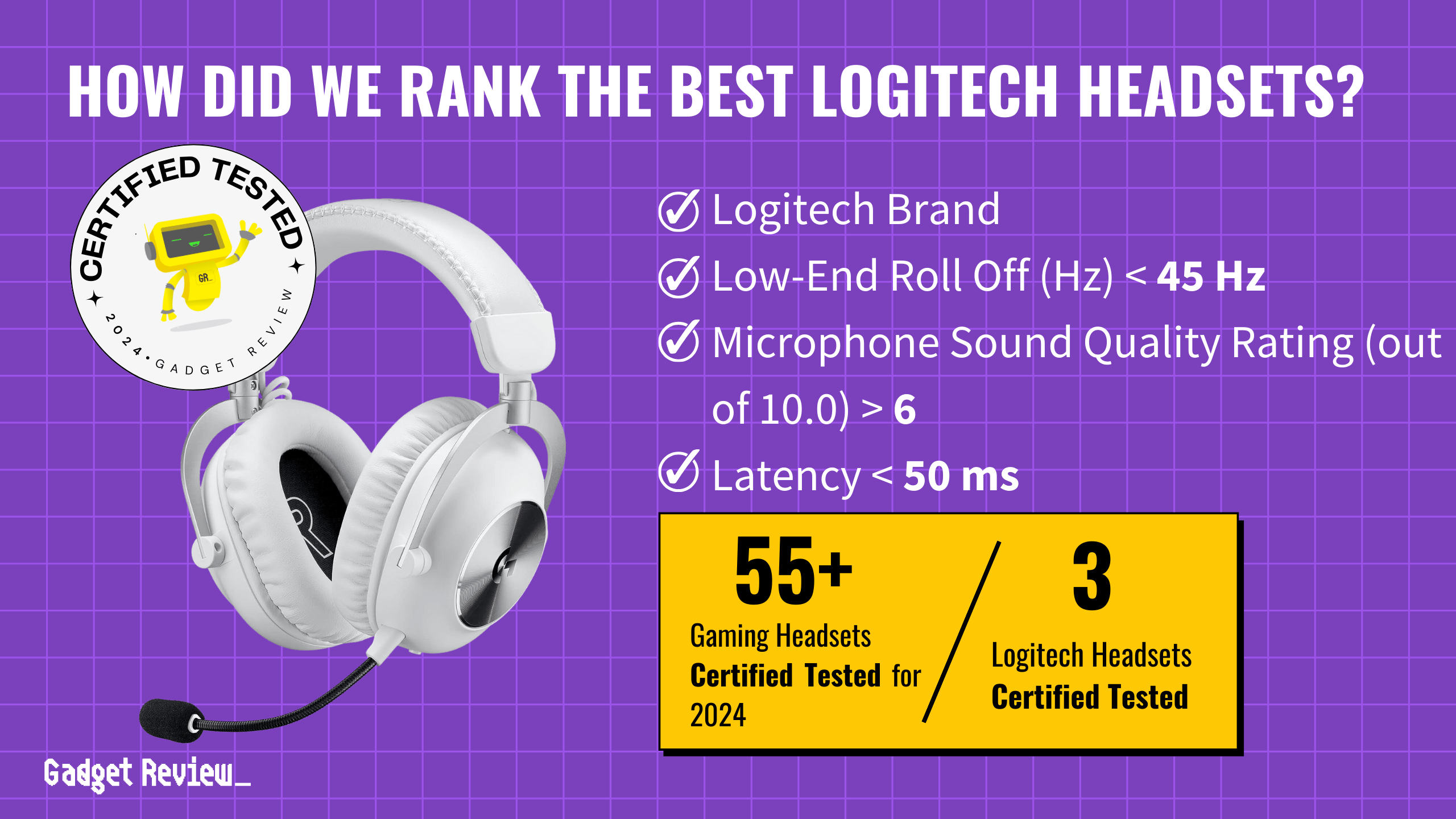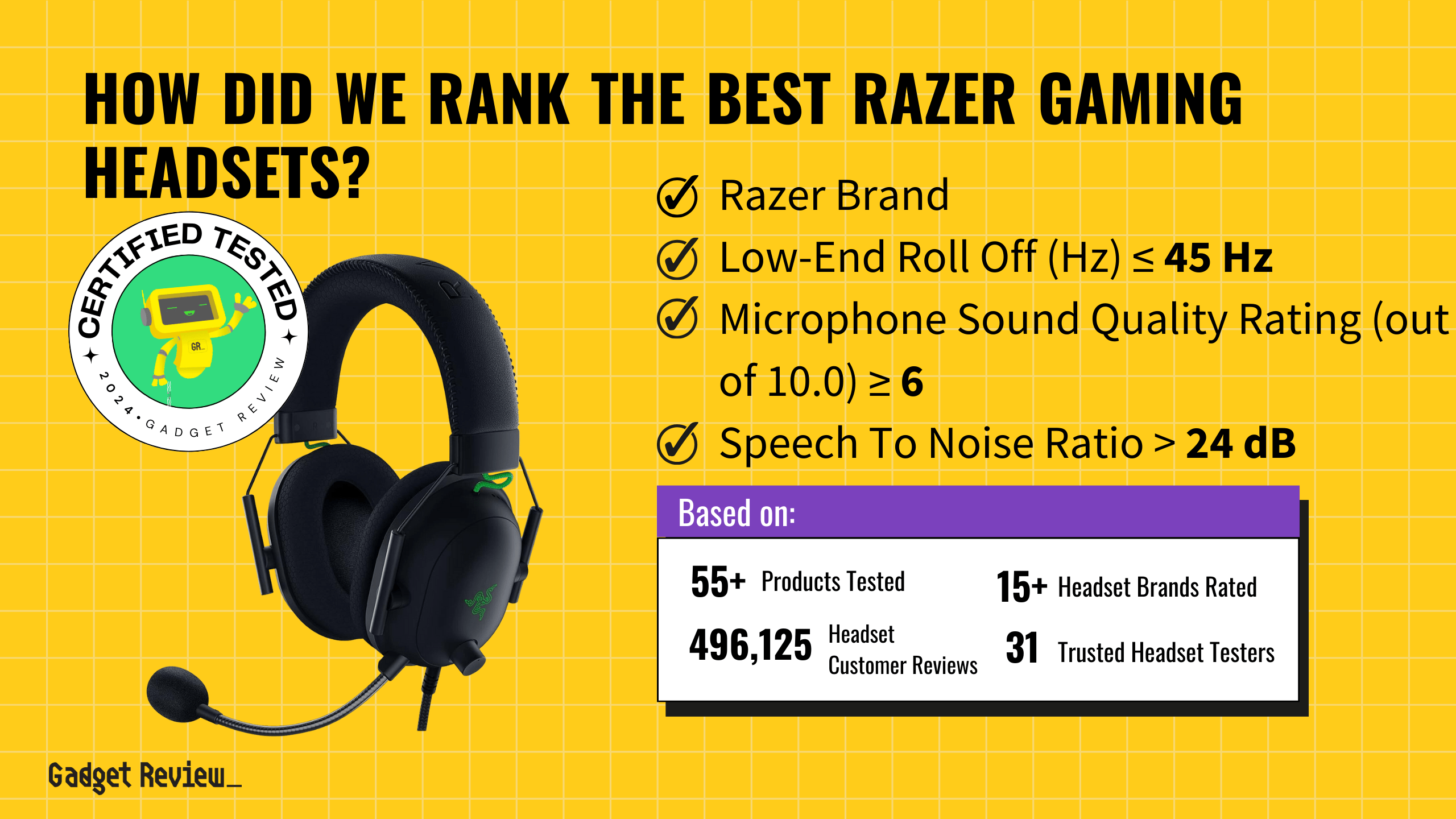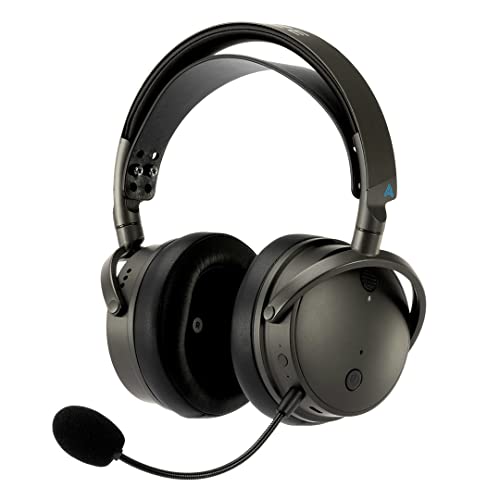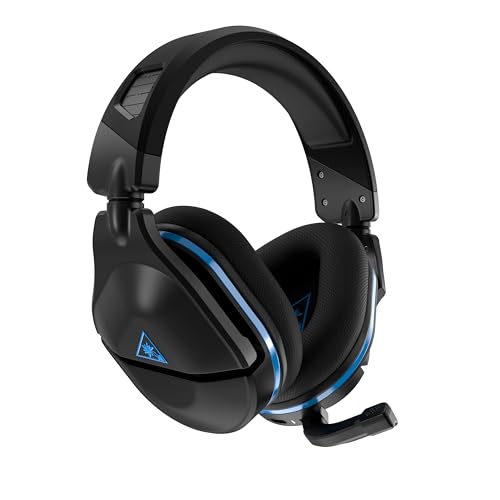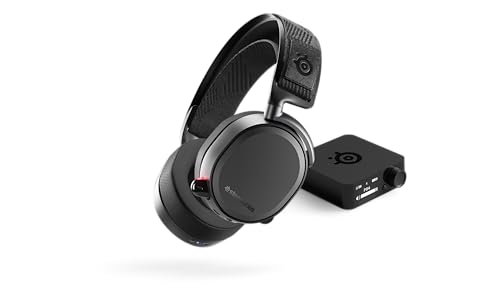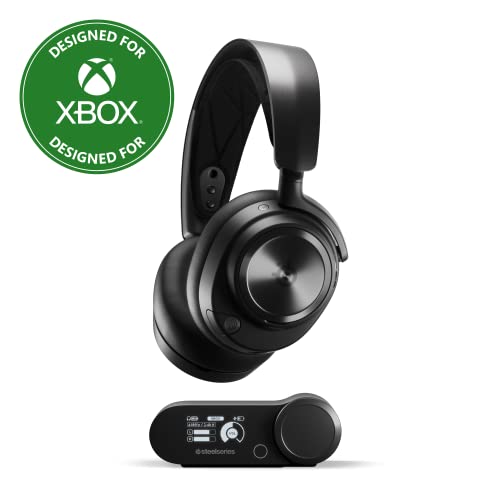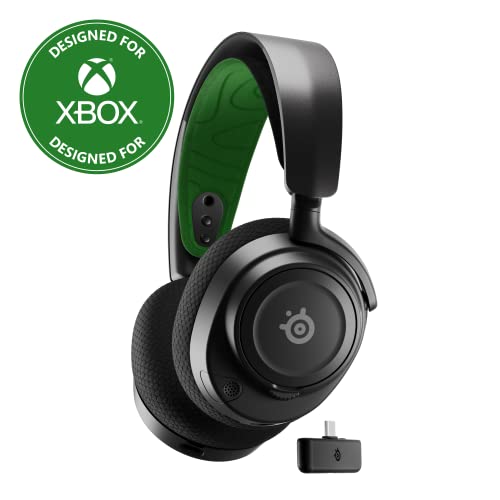When creating our best PS5 headsets buying guide, we cut through the clutter of fake reviews and insufficient expert analysis by digging into data and real-world testing of the top gaming headsets. We scrutinized 502,064 reviews (customer & expert) from 57 gaming headsets, evaluating essential performance aspects like low-end roll-off and Microphone sound quality.
Our research revealed that 72% of experts fall short in their testing, but we’ve identified the credible few. This meticulous process has allowed us to curate a list of 5 top-performing PS5 headsets, giving you the confidence to make an informed decision based on reliable test data and genuine insights. Similarly, our guides include options for excellent PS4 headsets and the best Xbox One headset, ensuring compatibility across different consoles and generations.
Below is our list of the 5 best PS5 headsets.


TL;DR
When you shop through our links, you’re backing our mission.
How Did We Rank the Best PS5 Headsets?
To redefine our gaming headset buying guides, we set ourselves apart from any other site on the planet by using a unique approach that leverages a comprehensive dataset from 200+ trusted sites. We focus on key testing metrics (2 required, 2 nice to have) and 1 specification to rank the top-rated PS5 headsets and ensure our recommendations meet your specific needs. Our commitment to unbiased reviews is powered by our ‘True Score’ system, targeting low quality and fake reviews. When you shop through our links, you’re backing our mission. Dive deeper to see how.
?️ Minimum Specifications
- Must be compatible with PS5.
? Test Criteria
- Low-End Roll-Off: A low-frequency roll-off below 45 Hz ensures the presence of subtle rumble in the bass, enhancing the immersive quality of your gaming or music experience.
- Microphone Sound Quality Rating: The microphone on the headset must meet or exceed a subjective evaluation rating of 6 in terms of sound quality.
? “Nice To Haves”
- Latency: The lag time between the headset receiving a Bluetooth signal and interpreting it for output through the speakers is less than 50 milliseconds.
- Speech To Noise Ratio: A minimum of 24 dB speech-to-noise ratio to ensure speech clarity by effectively minimizing background noise.
Latest Updates
- 05/07/2024: Republished the list to include the best PS5 headsets based on our True Score system.
Top PS5 Headsets For 2024
Prices accurate at the time of publishing

Our Approach to Evaluating the Best PS5 Headsets
We’ve revolutionized headset buying guides, distinguishing ourselves from any other site worldwide. Our distinctive methodology relies on a comprehensive dataset sourced from reputable sites, focusing on key testing metrics like low end roll off, speech to noise ratio, latency and microphone sound rating.
Through data aggregation and analysis, we meticulously tailor our recommendations to meet specific needs. Specifically, when it comes to PS5 headsets, this involves selecting models that have a low end roll off of at least 45hz. Delve into our data-driven methodology for precise and reliable headset suggestions.
Which Criteria Matters for Testing PS5 Headsets?
By focusing on these criteria (2 required, 2 nice to have), anyone can quickly and easily compare these headsets and how they’ll perform. This helps you make an informed decision and purchase a PS5 headset that will sound great.
| CRITERIA | RANGE | REQUIRED | DEFINITION |
|---|---|---|---|
| Low End Roll Off (Hz) | < 45 Hz | Yes | The point at which bass response starts to fall sharply, causing it to rapidly become inaudible. |
| Microphone Sound Quality Rating | > 6 | Yes | A subjective measure of how good the microphone on a headset sounds. |
| Speech to Noise Ratio (dB) | > 24 dB | No (Nice to have) | How effectively the headset’s microphone isolates the user’s voice in a noisy environment. |
| Non-BT Latency | < 50 ms | No (Nice to have) | The amount of lag time that exists between the headset receiving a non-Bluetooth signal and interpreting it to output it through the speakers. |
Our Trusted Data Sources
We looked at 110+ gaming headset reviewers and found that 31 are trustworthy (60%+ Trust Rating). The three we have listed below are our most trusted for headsets.
- Theresa Ketterling – Rtings, MuckRack
- Reece Bithrey – Trusted Reviews, MuckRack
- Andrei Frumusanu – AnandTech, MuckRack
Interested in a comprehensive analysis of our data sources? We’ve got you covered. Below, you’ll find a detailed list of every gaming headset review website we’ve identified, organized by their respective Trust Ratings from highest to lowest. But we didn’t stop there. We’ve meticulously reviewed each publication and verified the data by checking whether the authors have bio links to MuckRack or LinkedIn. We’re committed to not only checking the facts but ensuring their veracity.
Gaming Headset Test Data & Results
1. Low End Roll Off (Hz) Test Results
Low End Roll Off
< 45 Hz
Acceptable range of performance
Definition: The point at which response from the headphones starts to rapidly fall away from the target response in the bass end of the spectrum.
Units of Measurement: Hz (Hertz)
Tools to Measure: Frequency response software
Why It’s Important:
Roll off that starts later often indicates that a headset is able to produce deeper bass and still have it be audible, so if you love bass, you want the roll off to start later.
Deep bass is essential for an immersive gaming experience, and adds punch to common sounds, like gunfire and explosions. Low-end roll off is one of the major factors that helps determine how punchy this bass will sound. If the bass begins to roll off (or fade) too early in the audio spectrum, the result is a less impactful sound, which flattens out music and robs much of the sound you hear in game of depth and rumble.
Ideally, a gaming headset should maintain a robust bass response without significant drop-off at least down to 45 Hz, ensuring the bass feels full and present. Some headsets are capable of managing roll-offs that start in the low 20s or even the teens, which commonly indicates that the bass will be especially strong. Looking for roll offs that start in the low teens or single digits is unnecessary, however. Not only do these headsets not really exist, once you’re under 20 Hz, sound stops being audible, though you can still “feel” these frequencies in some cases.
Low End Roll Off (in Hz; lower is better)
2. Microphone Sound Quality Rating (out of 10.0) Test Results
Microphone Sound Quality
> 6
Acceptable range of performance
Definition: The subjective recording quality of a microphone.
Units of Measurement: N/A
Tools to Measure: N/A
Why It’s Important:
If you use your headset to communicate often, be it in games or just chatting, you want it to make you as clear as possible, so people actually understand what you’re saying.
This is a strange test because it relies on subjective input. In this case, we derived this rating from the testing data provided by RTings and Soundguys, who subjectively rate microphone quality, and have their readers subjectively rate it, respectively. From there, we can average out the ratings and create an overall idea of how good a microphone sounds.
Generally speaking, you want this to be higher than 6.0, as it means you’ll have acceptable sound quality when communicating. There’s no upper limit to sound quality – if you can find a headset that has a 10/10 and suits you and your budget, go for it. Low sound quality mics, however, will distort or blow out your voice, and that will make you hard to hear and understand.
Microphone Sound Quality Rating (higher is better)
3. Non-BT Latency (ms) Test Results
Non-BT Latency (ms)
< 50ms
Acceptable range of performance
Definition: The delay introduced by the headset receiving and processing non-Bluetooth signals.
Units of Measurement: Milliseconds (ms)
Tools to Measure: Timer
Why It’s Important:
If you’re looking to improve audio quality and reduce delay, non-Bluetooth standards are almost always going to be how you do that.
It’s common for many gaming headsets to feature a non-Bluetooth connection standard, either in addition Bluetooth, or instead of it. Generally speaking, non-Bluetooth standards are going to be superior to Bluetooth, offering reduced latency and increased sound quality.
Because non-Bluetooth connections are naturally lower in latency, we recommend using headsets with a latency of 50 ms or less. This is significantly better than Bluetooth and guarantees that the latency you experience is low enough that you’ll be hard pressed to identify the delay the headset is experiencing. If a connection standard produces a latency greater than 50 ms, it has more “time” to create issues with noticeable differences between audio and visuals (up to around 100 ms), but it will eventually begin to introduce a frustrating mismatch between the audio you hear and the visuals you see.
Non-BT Latency (in ms; lower is better)
4. Speech To Noise Ratio (dB) Test Results
Speech to noise ratio is a bit complex. In the simplest terms, it’s how you measure how good of a job a microphone is going to do with transmitting your voice in a noisy environment without also transmitting all of the background noise.
You’ll want a mic that has a speech to noise ratio greater than 24 dB. By looking for microphones that hit at least this ratio, you’re in a much better position to use your microphone in noisier environments without having to worry about tons of background noise filtering in. If the ratio is too low, expect to transmit dogs barking, air conditioners and fans, and people talking in the background every time you start talking – and if it’s bad enough, even when you’re not.
Speech To Noise Ratio (dB)
> 24 dB
Acceptable range of performance
Definition: How well the microphone does at preventing noise that isn’t you talking directly into the mic from being transmitted.
Units of Measurement: dB
Tools to Measure: Dummy head, test microphone, speaker
Why It’s Important:
A higher speech-to-noise ratio ensures your voice is clear over ambient noise, which is essential for effective communication in noisy environments during gaming.
Speech To Noise Ratio (in dB; higher is better)
Best PS5 Headsets: Mistakes To Avoid
- Ignoring Compatibility: Ensure that the headset you choose is compatible with the PS5. Look for headsets specifically designed for PlayStation consoles or those with compatibility with PS5 controllers and audio settings. If you are a Nintendo gamer, we also have the top headsets for the Nintendo Switch.
- Not Considering Wired vs. Wireless: Decide whether you prefer a wired or wireless headset. The best wireless headsets offer more freedom of movement but require battery charging, while wired headsets provide a reliable connection without worrying about battery life.
- Overlooking Comfort: Comfort is crucial for long gaming sessions. Look for headsets with padded ear cups, adjustable headbands, and lightweight designs to prevent discomfort and fatigue.
- Ignoring Audio Quality: Pay attention to the headset’s audio quality, including sound clarity, bass response, and surround sound capabilities. When choosing between 5.1 vs 7.1 gaming headset, consider that 7.1 headsets typically offer more precise spatial audio cues, which can be crucial for detecting the direction of in-game sounds, whereas 5.1 headsets provide a slightly less expansive but still immersive sound field. A headset with good audio quality can enhance your gaming experience and provide a competitive edge in multiplayer games.
The Best PS5 Headsets Tests Compared
Product |
True Score
|
Max Vol
|
Mic Quality
|
Speech To Noise
|
BT Latency
|
Non-BT Latency
|
Low-End Roll Off
| |
|---|---|---|---|---|---|---|---|---|
| 84 |
|
|
|
|
|
| $64.99 $100 $35 |
Turtle Beach Stealth Pro Wireless
| 83 |
|
|
|
|
|
| $235.23 $330 $95 |
| 82 |
|
|
|
|
|
| $113.99 $190 $76 |
81 |
|
|
|
|
|
| $139.99 $200 $60 | |
77 |
|
|
|
|
|
| $135.37 $230 $95 |

